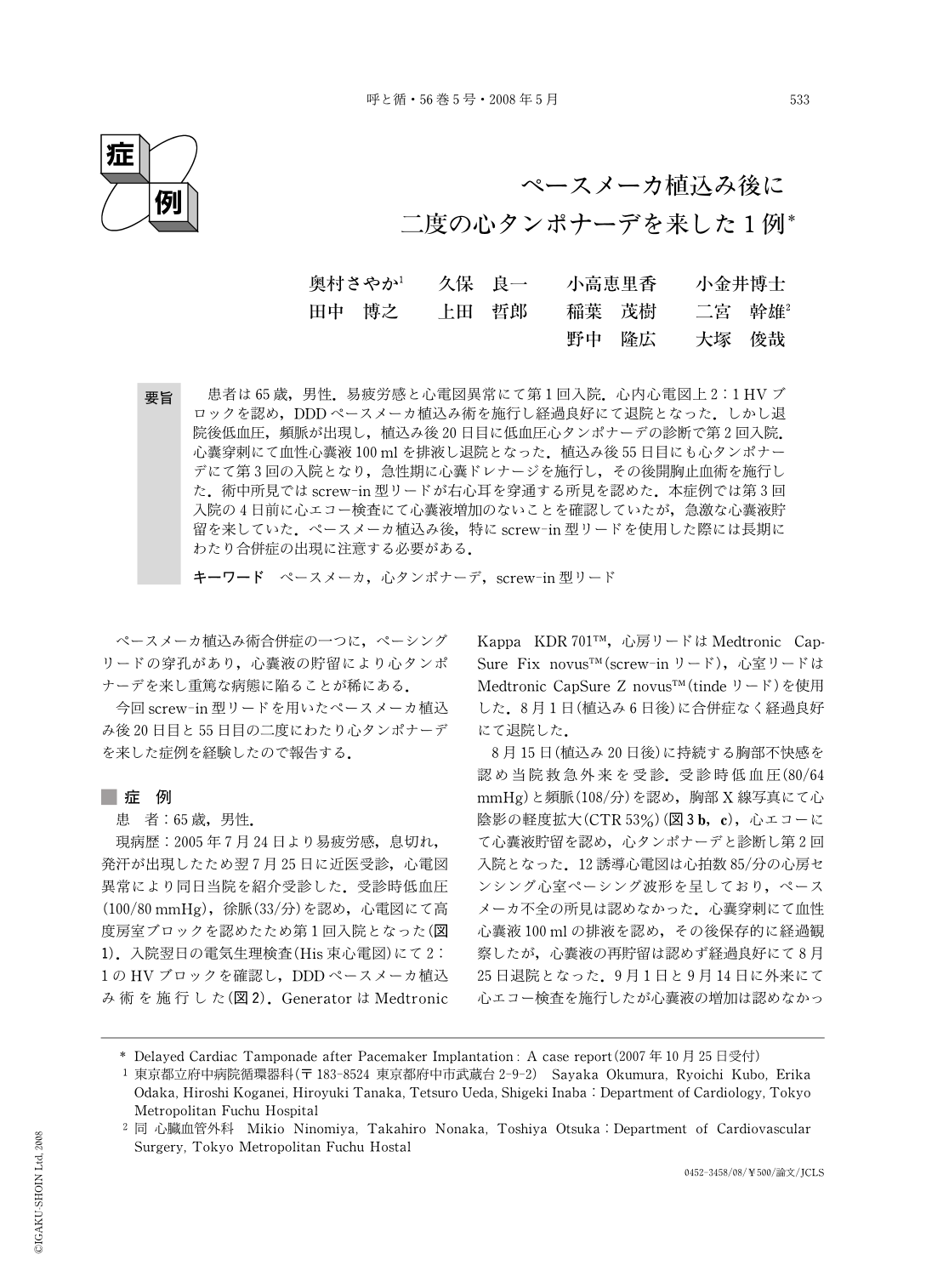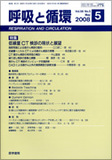Japanese
English
- 有料閲覧
- Abstract 文献概要
- 1ページ目 Look Inside
- 参考文献 Reference
要旨 患者は65歳,男性.易疲労感と心電図異常にて第1回入院.心内心電図上2:1HVブロックを認め,DDDペースメーカ植込み術を施行し経過良好にて退院となった.しかし退院後低血圧,頻脈が出現し,植込み後20日目に低血圧心タンポナーデの診断で第2回入院.心囊穿刺にて血性心囊液100mlを排液し退院となった.植込み後55日目にも心タンポナーデにて第3回の入院となり,急性期に心囊ドレナージを施行し,その後開胸止血術を施行した.術中所見ではscrew-in型リードが右心耳を穿通する所見を認めた.本症例では第3回入院の4日前に心エコー検査にて心囊液増加のないことを確認していたが,急激な心囊液貯留を来していた.ペースメーカ植込み後,特にscrew-in型リードを使用した際には長期にわたり合併症の出現に注意する必要がある.
A 65-year-old man with a past history of DDD pacemaker implantation for advanced atrioventricular block was admitted to our hospital because of hemodynamic collapse. Chest radiography and echocardiogram confirmed the diagnosis of cardiac tamponade occurring 20 days after pacemaker implantation. Pericardial drainage was immediately performed obtaining about 100ml of non-clotting fresh blood. The patient recovered after drainage and was discharged, but he was readmitted because of cardiac tamponade again 55 days after implantation. Echocardiogram showed a large pericardial effusion and an emergency operation was carried out. At surgery, hemorrhagic pericardial effusion and a lead-tip screw that had penetrated through the right atrial appendage were found. Late perforation of the right atrium or right ventricle is an uncommon complication after pacemaker implantation but should be suspected by a general cardiologist. A pacing lead, especially a screw from the lead, may potentially injure the heart. Long-term regular check-up of lead position and pacing status is recommended.

Copyright © 2008, Igaku-Shoin Ltd. All rights reserved.


